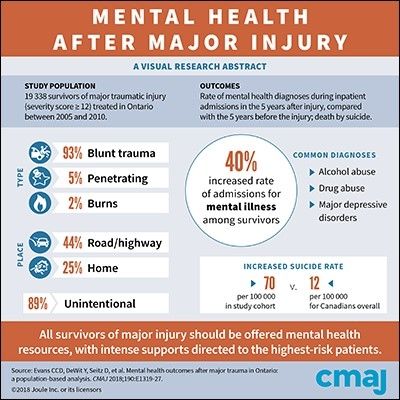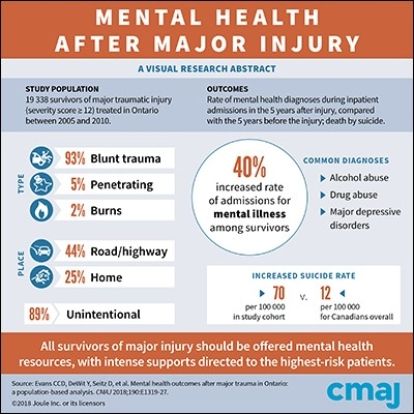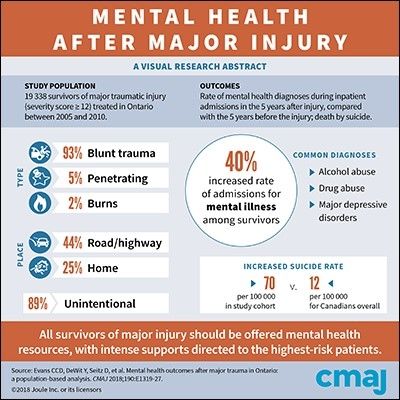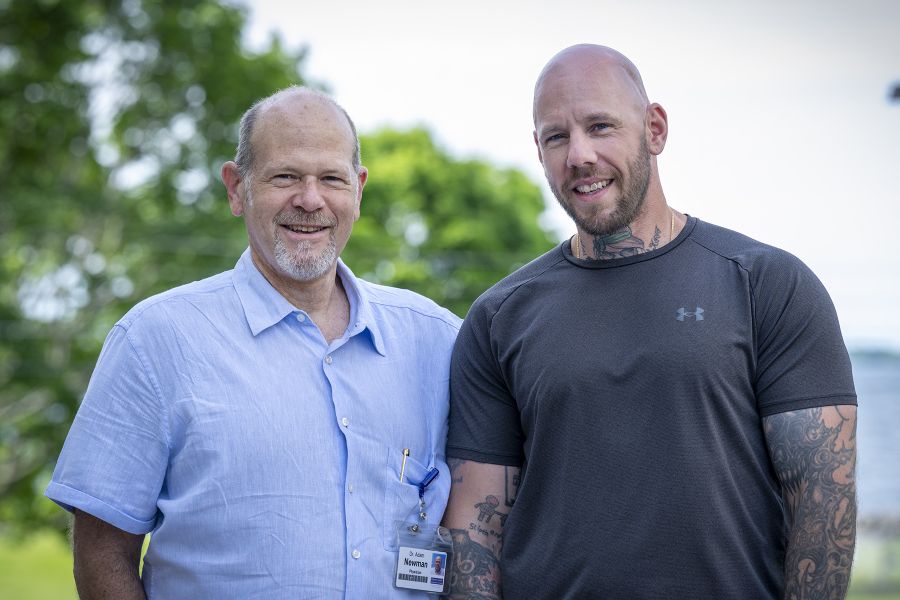
A new study headed by KGH Research Institute clinician-scientist Dr. Chris Evans has revealed people who experience major injuries requiring hospitalization, such as those caused by car crashes and falls, have a much higher risk of being admitted to hospital for mental health disorders. Results showed that this group is at a higher risk of suicide as well.
The study was published in the Canadian Medical Association Journal (CMAJ), and supported by data from the Institute of Clinical Evaluative Sciences Queen’s.
“When we started this study I had some evidence based on my own experience working in the Emergency Department. That gut feeling was confirmed when we started to look at the data and found that major trauma was associated with a 40 per cent increased rate of hospital admission for mental health conditions,” says Dr. Evans, who is head of Kingston Health Sciences Centre’s Trauma Program and Assistant Professor of Emergency Medicine at Queen’s University. “The most common mental health diagnoses were alcohol abuse, drug abuse disorders, and major depressive disorders.”
The study, using data from the Institute of Clinical Evaluative Sciences Queen’s, looked at more than 19,000 patients in Ontario. The majority of those patients that had experienced major trauma were male (70.7 per cent), lived in urban areas (82.6 per cent), and had accidental injuries (89 per cent).
The study also found that children and youth under 18 years of age had the largest increase in admissions for one or more mental health issues after injury. Suicide is also higher in people with major physical injury, with 70 suicides per 100,000 patients per year.
These factors, along with low socioeconomic status, location, and surgical treatment for these injuries, were associated with higher admissions for mental health issues.
“The data showed that patients who suffer major injuries have high suicide rates in the years after they suffered their injuries,” says Evans. “It’s clear that we need to pay special attention to these high-risk patients, including children and youth.”
For more information visit the CMAJ website.





